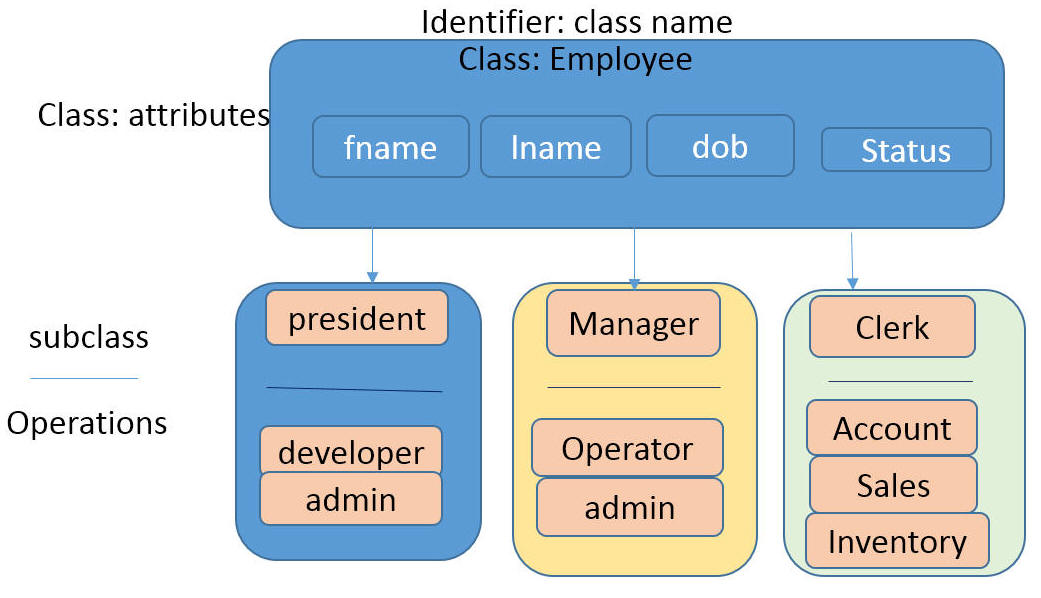- Must support the modular complex objects.
- Must be extensible or allow the new instance of the class as a new data type.
- Support encapsulation, meaning the data and the method implementation only be allowed within the members or derived entities, and should be accessible to external entities.
- The object must be able to inherit the properties (data and methods) of parent entities.
- Each object would be distinct, segregated and accessible without any conflicting with other objects.
- Objects should be capable of interacting with other objects.
| OO Data Model | Extended relational data model |
| Type | Entity Definition |
| Class | Entity |
| Object | Entity Set |
| Instance variable | Attribute |
| Not applicable | Constraints with Key |
| OID | NA |
| Method | NA |
| Class Hierarchy | Database Schema |

Script
create or replace type objT1
( fname varchar(20), stdate date);
/create table T1
(eno number(5),
fname varchar(20),
myvar objT1
);
SQl> desc objT1
Will describe the tableInsert data with
insert into T1 (1, "Peter', objT1(' your comment', '1998-10-12' ));